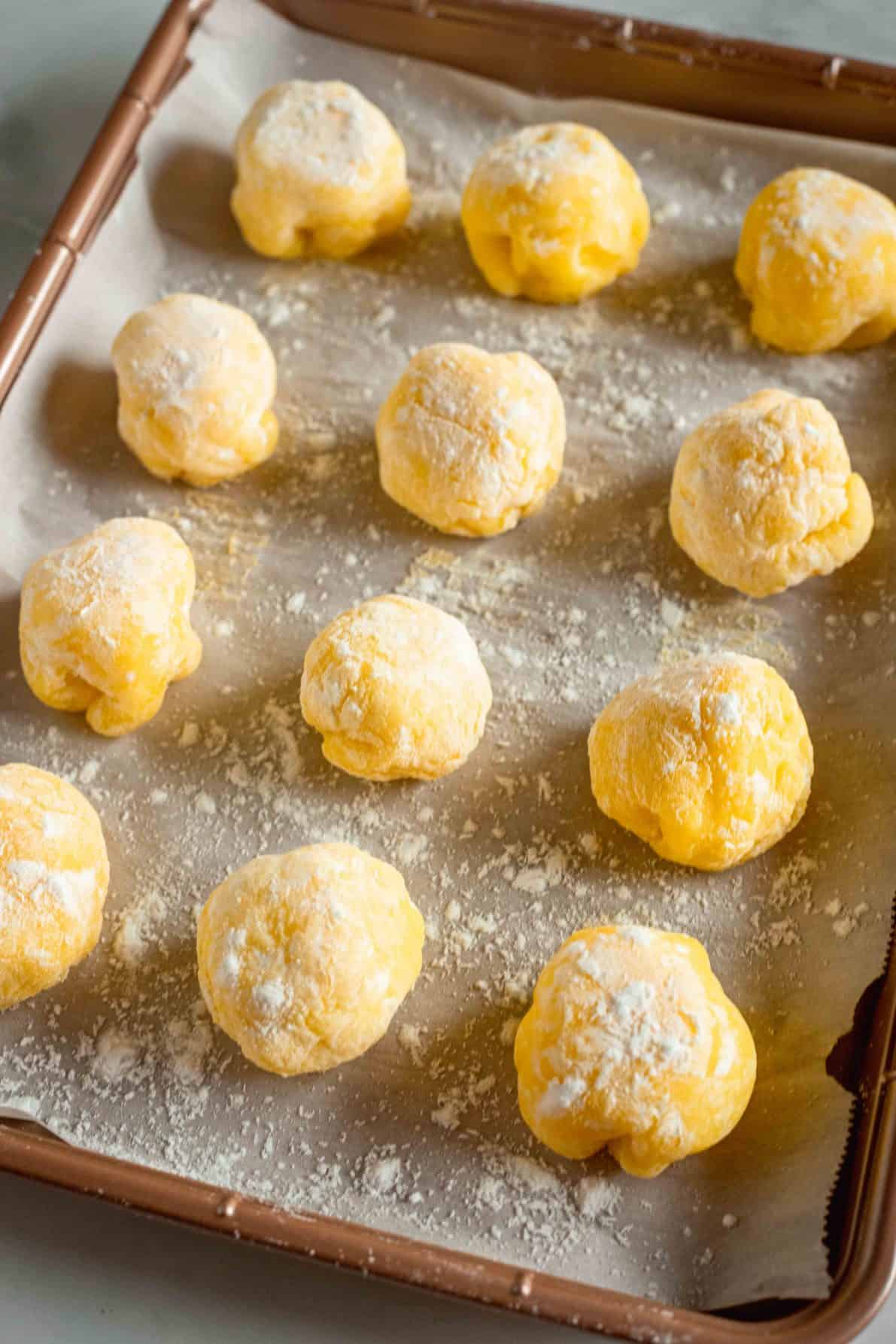

If the names of all these Japanese ingredients are very confusing to you, don’t forget to check out my food glossary! How to Make Mochi in a Microwave I don’t really recommend using any other substitutions, so if you don’t have a market nearby, look for katakuriko online or on Amazon. The only other ingredient that may be new to you is katakuriko, or potato starch. If you don’t have a Japanese market near you, you can also find mochiko at Target or Amazon. I always buy this mochiko at our local Japanese market. The most famous brand of mochiko in America is Koda Farm’s Blue Star Mochiko. This type of rice is called glutinous rice because of how sticky it is, but there is no gluten in it. I mentioned this above, but this is actually a misnomer. If you’re new to Japanese ingredients, mochiko is just the name for mochi flour. And the last ingredient is katakuriko, or potato starch, which is just used to prevent the mochi pieces from sticking to each other. Food coloring is often added, but it is optional. That’s because it really only has four main ingredients: mochiko, coconut milk, water, and sugar. Out of all the mochi desserts in America, chi chi dango is the most similar to plain, basic mochi. Chi chi dango is always made from mochiko, the mochi flour, and includes other ingredients. That means there is literally only one ingredient in making mochi: cooked glutinous rice. However, as mentioned above, mochi in Japan traditionally would refer to dishes made from pounding cooked mochi rice. In our communities, the two terms are interchangeable. Growing up in California, my Japanese American friends and family often referred to chi chi dango as mochi. What is the Difference Between Chi Chi Dango and Mochi? Nowadays, when Japanese tourists come to Hawaii, many think that chi chi dango is a dessert of Hawaiian origins, never realizing that it came from Japan!Ĭhi chi dango is a popular dessert to eat on the Japanese holiday Hinamatsuri, or Girl’s Day, and is often colored pink or with pink and white stripes. It was allegedly brought over to Hawaii by Japanese plantation workers, but while chi chi dango fell out of favor in its home country, it maintained its popularity on the islands. I can’t find the original source for this information, but I read before that chi chi dango originated in Japan. If you’ve never have chi chi dango before, they are most similar to the little mochi bites you find at froyo shops. You often find them shaped as rectangles, like caramels or taffy, and they’re very popular in Hawaii. As the name implies, chi chi dango is a mochi dessert consisting of chewy, sweet, rice dumpling bites. If someone in my family says they want to each mochi, they are usually thinking of chi chi dango. Most mochi desserts that are popular in America are made from mochiko, the glutinous rice flour.Įxamples of American mochi desserts that are made using mochiko include mochi donuts, mochi waffles, butter mochi, mochi ice cream…īut if you want just a plain, chewy, sweet bite of mochi, similar to the mochi bites you get at frozen yogurt shops, you’ll want to make chi chi dango.

In reality, I rarely see any mochi foods made from pounded rice here. In America, mochi can refer to any dessert made from the glutinous rice (mochikome) or glutinous rice flour (mochiko).

Desserts made using the flour usually have different names. In Japan, the word “mochi” most commonly refers to the first method. So you have two ways of making mochi: either pound cooked rice to make a cake or use the rice flour to make some sort of treat. However, in America, us Japanese Americans usually use the term mochi to describe any rice cake dessert that is made from the glutinous rice flour, or mochiko. It does not have any sugar added and can be eaten in savory dishes as well as desserts. Traditionally, mochi in Japan refers to a dish made from pounding this sticky rice into a dense rice cake.

In English, it’s called glutinous rice, but more on this misnomer later. Mochi is a Japanese food that is made from a very sticky type of rice called mochikome.
#MOCHI DESSERT FREE#
Bonus – this mochi dessert is naturally gluten free and vegan. With only four main ingredients and no special equipment, you can have perfectly chewy, just lightly sweetened mochi cake at home. Are you looking for a basic but delicious mochi recipe? Try chi chi dango! It is the easiest homemade mochi recipe.


 0 kommentar(er)
0 kommentar(er)
